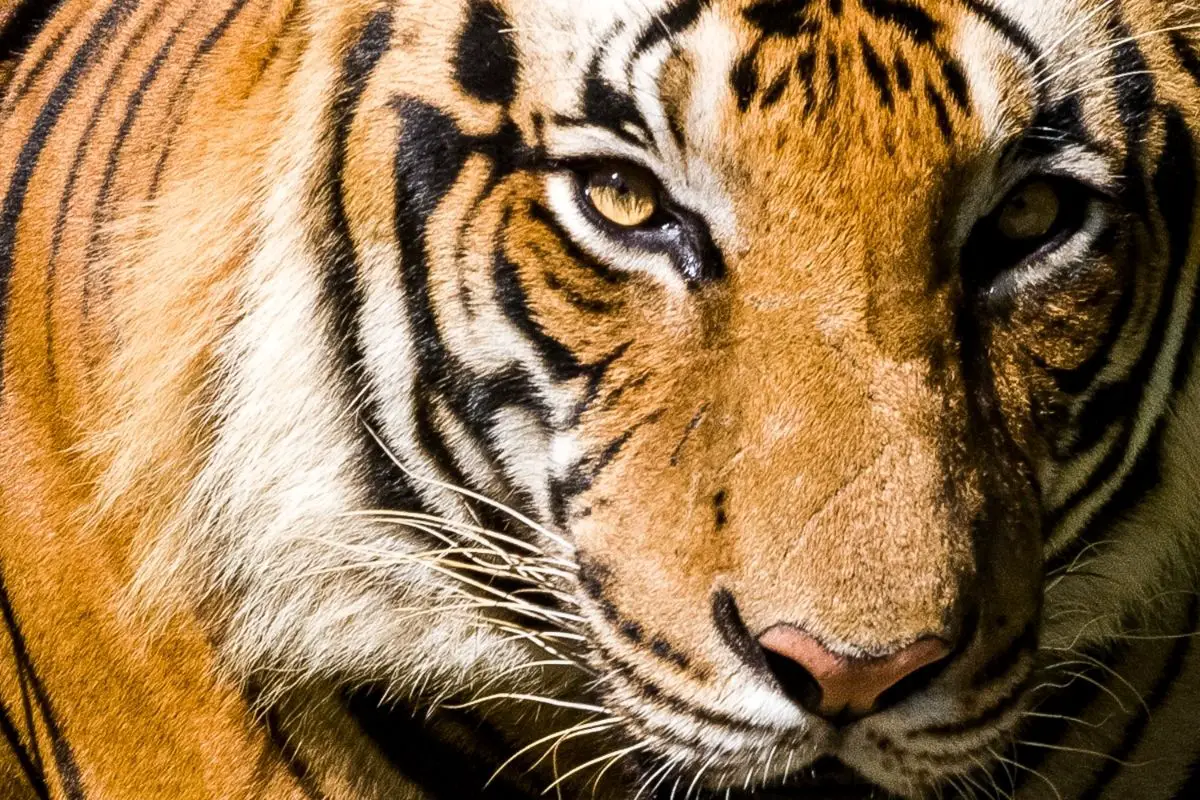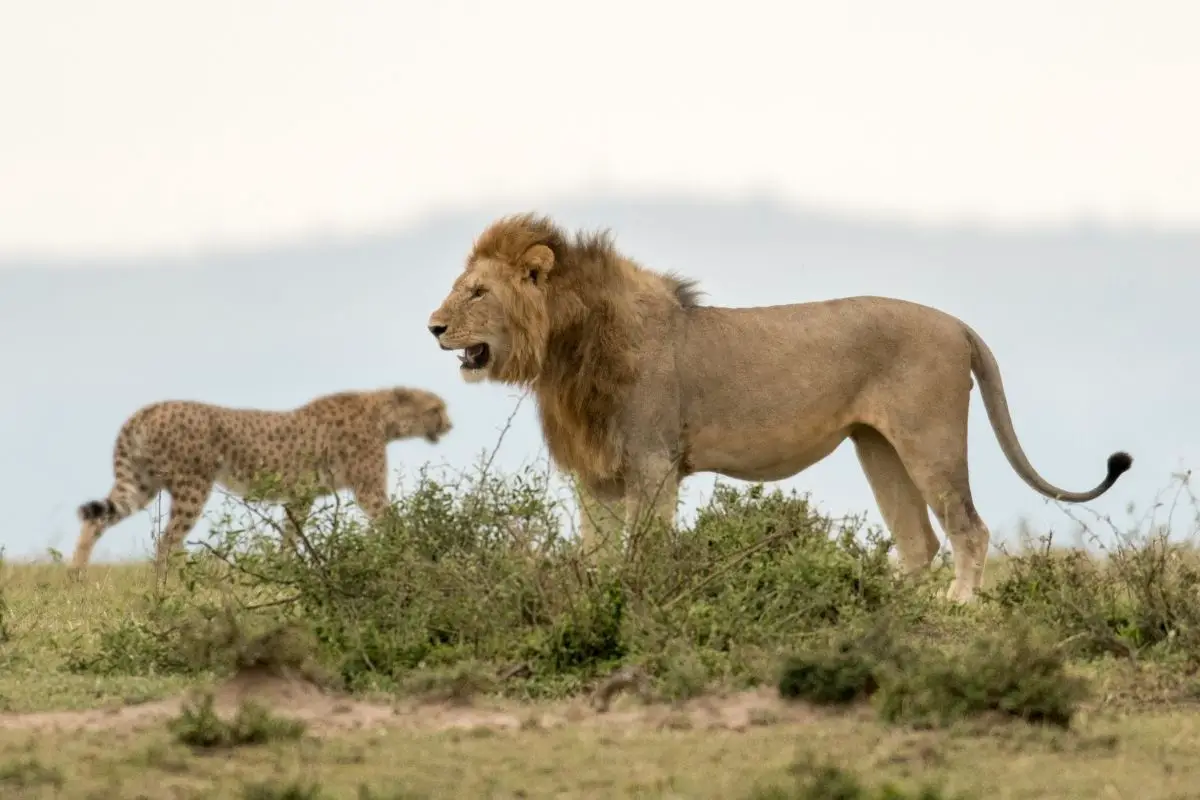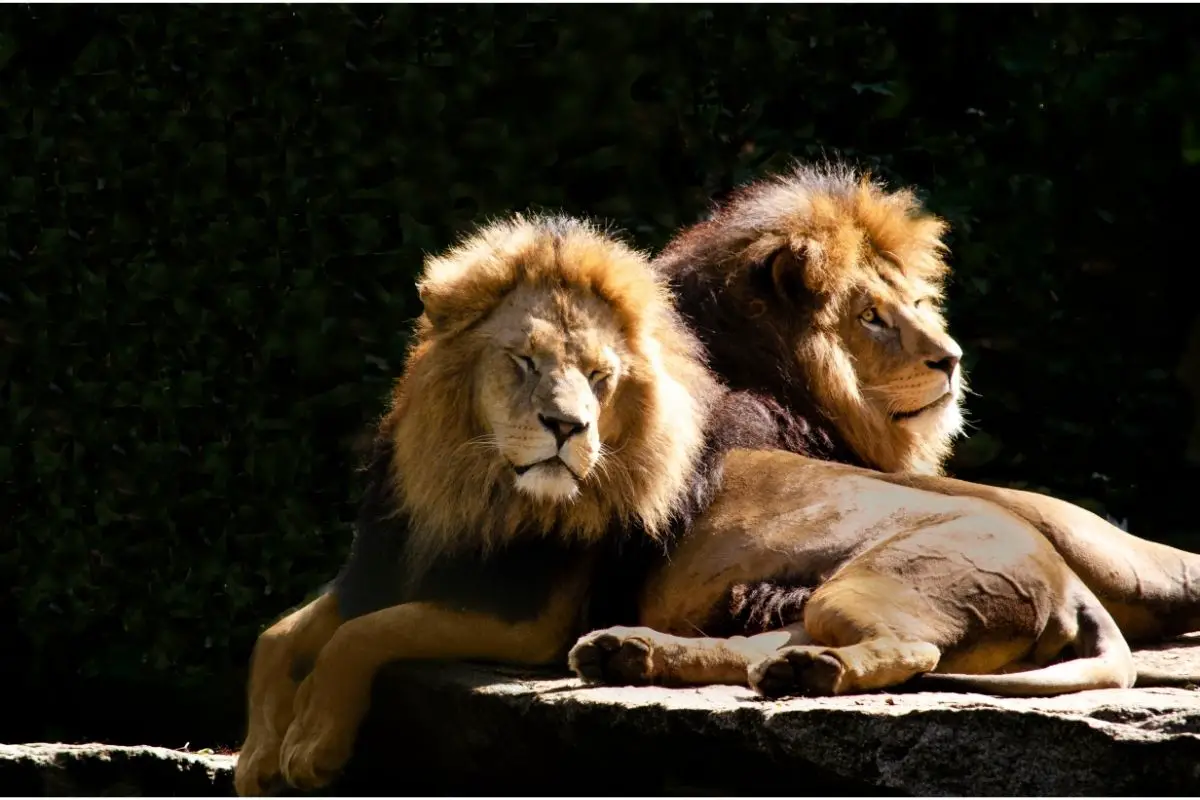Would a lion actually eat a person? Are lions really that dangerous to humans? Here, we look at the real risks lions pose to humans.
Lions are apex predators capable of bringing down prey far larger than humans. Their fearsome reputation inevitably raises questions – would a lion actually eat a person? Are lions really that dangerous to humans? Understanding the real risks lions pose requires examining both nature and statistics.
While human-killing lions make chilling headlines, circumstances show these incidents are actually quite rare and preventable. Lion attacks prove fatal less than 50% of the time and extensive data reveals their limited threat relative to many other wildlife species.
By exploring lion behavior, distribution, and human interactions, we gain perspective on the realities of risk. Knowledge and preventative measures make co-existing with lions quite feasible with minimal danger.
Examining both the facts and folklore lifts the veil on lion aggression, attacks, and predation.
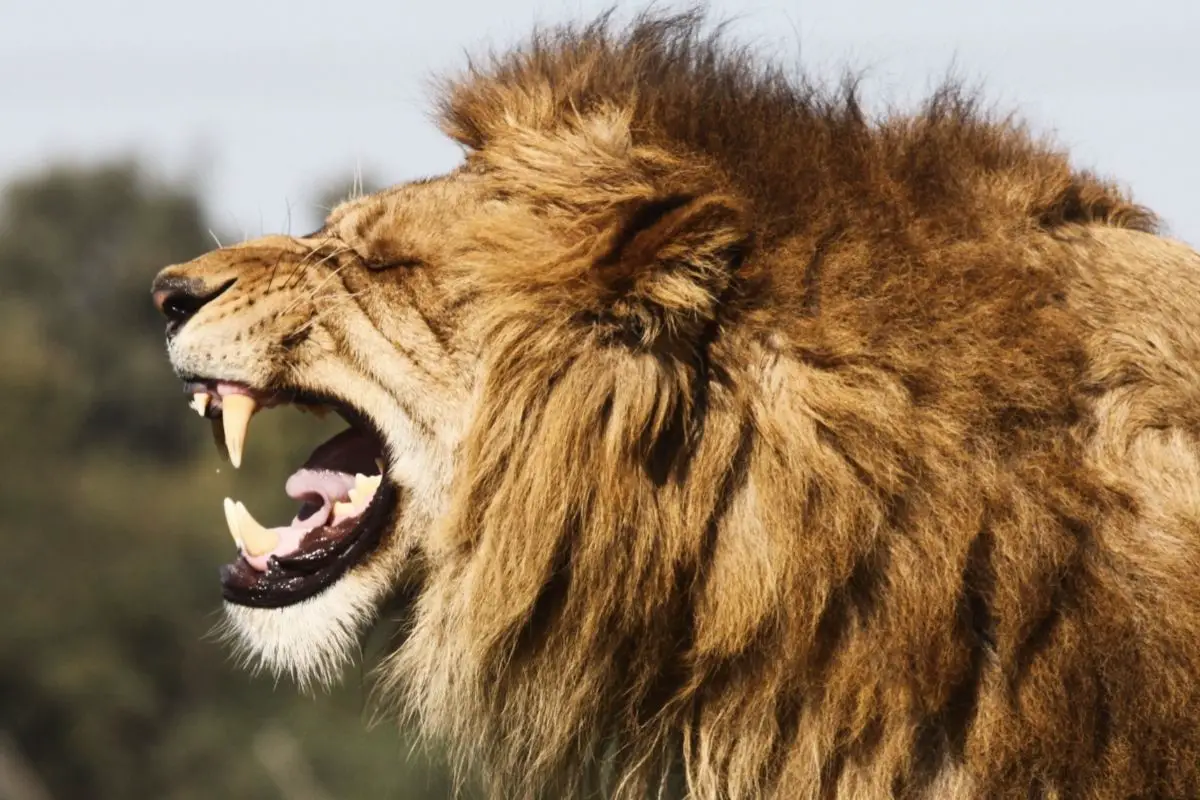
Lion Capabilities Related to Aggression
Before assessing how often lions target humans, it helps to respect their power:
Physical Strength
One of the most powerful felines, lions can take down prey up to 3 times their size. With leaping ability over 36 feet, short bursts hitting 50 mph, and bite force 7x greater than humans, lions are superb hunters.
Group Hunting Instinct
Unlike solitary cats, lions evolved to coordinate ambushes in prides up to 30 members strong, surrounding prey. Their numbers and tactics overwhelm large animals rapidly.
Opportunism
Lions are not picky eaters. As opportunists, they hunt vulnerable prey of any species. They readily scavenge kills from other predators given the chance.
Intelligence
With highly strategic instincts, lions learn quickly, exhibit long memories, and can adapt habits rapidly. Their cognitive abilities add to risk.
Given these formidable capabilities tailored to hunt large animals, lions have clear potential for harm in chance encounters with humans, especially if provoked, startled, or desperate for food. We are comparatively easy prey. However, statistics reveal key reasons lions very rarely target people.
Lion Distribution Minimizes Human Contact
The remote regions lions inhabit play a key role in limiting dangerous interactions:
- Lions reside mainly in protected national parks and remote wilderness far from human activity centers.
- Just over 20,000 lions remain in Africa in which humans and lions coexist in less than 25% of the continent.
- India’s Asiatic lion population of 650 individuals lives among sparse villages of the Gir Forest.
- No sustained lion populations exist outside Africa and India’s Gir Forest, restricting contact.
Essentially lions still occupy sufficient remote habitat that encounters are minimized, unlike species like elephants and hippos sharing space with rural African communities. Low overlap with humans limits conflict.
Lion Attacks on Humans Are Rare
Statistical records affirm lion attacks prove extremely rare events:
- Highly dangerous encounters between lions and humans number fewer than 100 per year across Africa.
- Attacks prove fatal only 22% of the time. Lions often stop after an initial lunge rather than prolonging an assault.
- For comparison, elephants kill around 500 individuals annually across Africa, mainly trampling incidents. Hippos kill about 3,000 people each year.
- Mosquitos transmitting malaria contribute to over 600,000 annual deaths dwarfing carnivore fatalities. Domestic dogs also fatally attack more humans each year than lions in Africa.
- More people die from lightning strikes annually than have been killed by lions during the past century.
The low incidence of lion assaults reinforces that in areas where humans and lions interact, attacks are relatively infrequent events, with victims standing a high chance of surviving.
Circumstances Around Most Lion Attacks
Most lion attacks share commonalities that point to causes:
- Attacks frequently target vulnerable individuals like small children or older victims.
- Close to 90% occur during daytime which is unusual for lions, indicating surprise encounters.
- Livestock grazing unattended, even in parks, attracts lions seeking vulnerable prey.
- Intrusion into lion habitat or game preserves raises risk.
- Provocation or wounding a lion prompts retaliation.
Essentially almost all attacks link to startle situations, territorial defense, or desperate starvation. Healthy lions in normal conditions rarely pursue human confrontations.
Lions View Humans as High-Risk Prey
Lions evolved to recognize humans as a substantial threat rather than ideal prey:
- Unlike timid herbivores, humans have capacity to injure lions, lowering incentives to attack.
- Standing upright, humans appear as tall imposing figures that don’t activate lions’ chase instincts triggered by fleeing prey.
- Noises and scents from human settlements and livestock dissuade lions from approaching developed areas. They avoid perceived threats.
- Lions attacking humans are often killed in retaliation, teaching avoidant behavior. Only desperate or disturbed individuals risk confrontations.
This learned avoidance means most lions will circumvent interactions with humans when possible (let alone to eat humans), rather than treating people as prey. Our risks to them outweigh the rewards.
Reasons Lions Would Attack or Eat Humans
Given all the above, circumstances when lions might attack and consume humans remain extremely rare but do stem from certain scenarios:
Starvation
During times of drought or injury when unable to effectively hunt natural prey, the risks of a starving lion preying on humans increase if they stumble into proximity. But success is not guaranteed given our threat potential.
Territorial Disputes
In India’s Gir Forest, rare attacks sometimes happen when lions guarding a fresh kill are startled by illegal intrusions into their protected preserves by people. Defending territories can provoke aggression.
Old Age or Injury
Elderly, ill, or injured lions who can no longer capture traditional prey may turn to livestock or humans out of desperation. But healthy adult lions routinely avoid human contact.
Predatory Attacks
Very rarely a perfectly fit lion may stalk humans purposefully. But out of the few annual fatal attacks, most involve defensive acts or surprise encounters rather than overtly predatory behavior.
Stalking people remains extremely anomalous among wild lions. Only a disturbed individual would attempt this rather than just seeking normal prey. And success is unlikely – humans travel in groups and have capability to injure lions in skirmishes.
Essentially the only circumstances in which an otherwise healthy lion might pursue human prey is under severe desperation due to famine, isolation from habitat, or inability to capture normal prey. But even starving lions still typically avoid contact when possible rather than hunting people.
Fatal Lion Attacks on Humans Overview
Statistical records affirm that fatal lion attacks on humans are extremely infrequent events:
- Total fatalities average less than 200 per year globally.
- Many attacks result from lions being startled, cornered, or provoked rather than stalking people as prey. Defensive rather than offensive.
- Between 1990 and 2005, 63 lion-caused human fatalities occurred among rural Tanzanian communities bordering wilderness areas containing 30,000 lions. This indicates minimal conflict.
- More people died from dog bites, snake bites, crocodiles, hippos, and elephants than lions in Africa between 1900-1990.
- Horrible fatalities make headlines, but millions safely coexist with remote lion populations daily across Africa with negligible incidents.
The data substantiates that fatal lion attacks are statistical anomalies considering the opportunities for contact. A case of being in the wrong place at the wrong time rather than evidence of routine lion aggression. Caution is warranted but excessive fear overstated.
Putting Lion Attack Statistics in Context
While headlines sensationalize anomalous fatal lion attacks, wariness must be tempered by statistical realities that convey true risk levels:
- US Mountain lions kill around 4 people annually on average from an estimated cougar population nearing 4,000. Despite 40 million people encroaching on their habitat, attacks remain incredibly rare, with millions coexisting safely.
- Fatal shark attacks worldwide over the past 50 years number under 1,000 total. Cows kill 20 people annually in the US. Deer attacks cause 120 human fatalities each year. The reputation exceeds the reality.
- Out of 500-1,000 annual fatal bear attacks, only 1 in 25 involves grizzlies. Despite their fearsome aura, black bears prove 25x more likely to fatally attack. Perception rarely aligns with fact.
- Likewise, the king of beasts causes far less loss of human life compared to statistics we accept from domestic animals, insect disease vectors, and harmless herbivores. Evaluating the numbers dispels exaggerated fear of lion aggression.
A Look at Famous Man-Eating Lions
While the vast majority of lions shy away from human contact, a few individually dangerous man-eaters have emerged periodically:
The Tsavo Lions
In 1898 during construction of a Kenyan railroad bridge, a pair of male lions picked off fearful workers at night for several months, killing at least 35 workers before being shot by the project leader. Their story was sensationalized in films like The Ghost and the Darkness.
The Lions of Njombe
Between 1932 and 1947, several lions in Southern Tanzania reportedly killed and consumed over 1,500 people, likely after discovering eating human corpses. Eventually game officials dispatched the alarming predators, but their attacks spawned legends.
Sorbibor the “Leopard” of Uttar Pradesh
This aggressive male took over 300 human lives in Nepal and India in the 1930s by creeping into huts at night. “Leopard” was a misnomer – his proportions and tactics were unmistakably lionine according to biologists. He evaded traps and gained mythic status before eventual demise.
While these notorious killers exploded from anomaly to epidemic, they represented radical outliers engaging in serial attacks rather than typical lion behavior. No species exists without erratic cases. Their rarity proves the rule lions do not view us as routine prey.
Preventing and Surviving Lion Encounters
While lion attacks are rare, prudent practices minimize the risks when sharing habitat:
- Avoid bushwalks in lion territories at night or dusk when they actively hunt. Stay alert to surroundings.
- Travel in groups if possible which discourages lions from perceiving vulnerability. Power in numbers.
- Do not approach a lion if observed, especially one feeding. Back away slowly. Running may activate predatory instincts.
- Keep livestock and crops protected by fences and deterrents to prevent attracting lions.
- Know typical lion behaviors. Sudden inexplicable disinterest in a carcass signals a lurking ambush.
- Fighting back aggressively may persuade less determined attackers to retreat that are merely startled or defending cubs rather than seeking a meal.
While predictions are unreliable, caution without panic remains wisest in lion country. Statistical odds favor uneventful coexistence. Their reputation may exceed reality, but prudence pays when sharing habitat with one of nature’s most capable hunters.
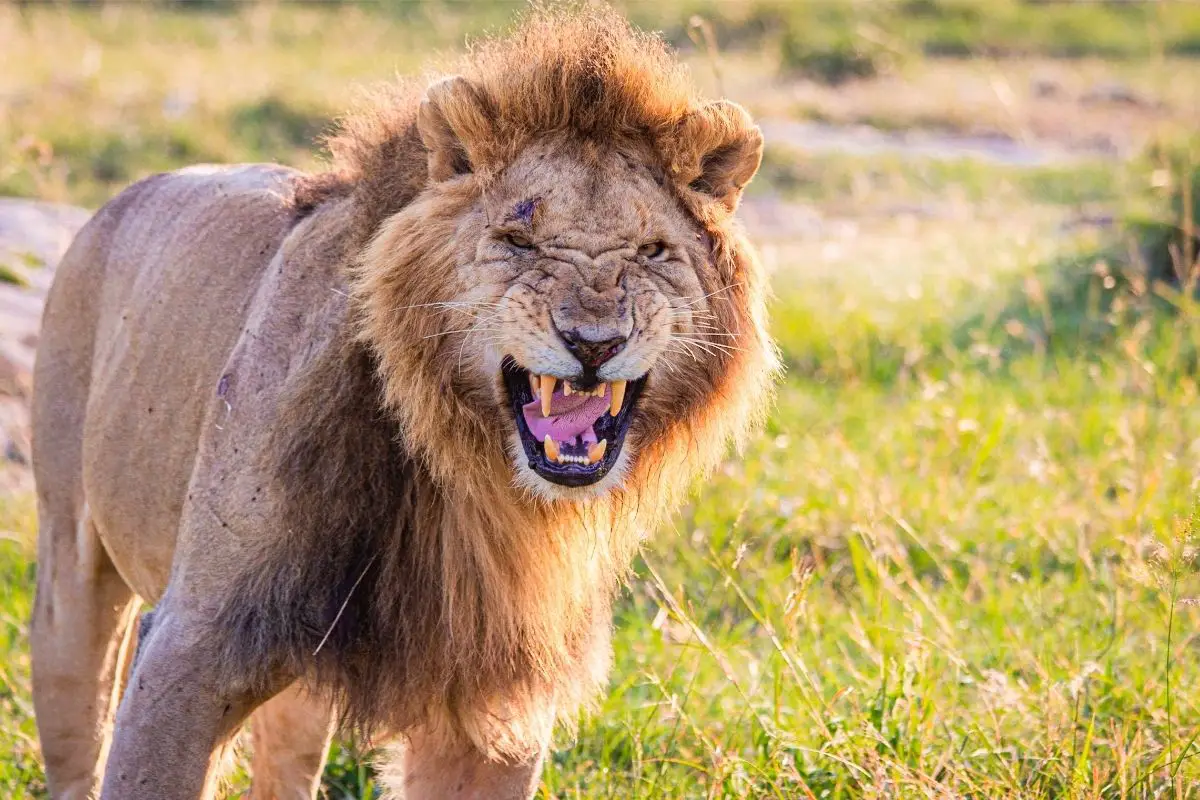
Can Captive Lions Become Man-Eaters?
Finally, what about the risks posed by captive lions raised in unnatural conditions? Can maltreatment lead captive lions to attack humans?
No Innate Man-Eating History
There exists no evidence lions possess inherent man-eating tendencies programmed genetically. All notorious cases resulted from highly unnatural conditions or deprivation triggering aberrant behavior.
Captivity Alters Behavior
Poor captive conditions including inadequate space, lack of enrichment, physical abuse, or removal from mothers before 18 months of age can severely impact behavior. This may diminish psychological barriers to unusual aggression.
Possible But Highly Anomalous
In theory, a captive lion subjected to extreme mistreatment could potentially view humans as prey if their natural avoidance conditioning is broken. But documented occurrences prove vanishingly rare. Only a small handful of abusive captive scenarios over decades provoked attacks.
Not Predictable
Due to minimal examples, predicting likelihood of captive lions turning man-eater is unreliable. Their wild instincts remain to avoid conflict when possible. Prevailing ethics and oversight now restrict access that could provoke captive animals.
Essentially while captive settings might produce psychological scars lowering attack inhibition thresholds, even heavily abused lions retain instincts to evade rather than stalk humans. The risks prove exceedingly small and can be further minimized through proper captive care and managing public contact.
The Realities of Lion Aggression and Man-Eating
While their capabilities are formidable, realistic analysis proves the frequency of lion attacks on humans is extremely small:
- Wild lion populations avoid contact with humans when able, mitigating opportunities for conflict. Attacks are rare defensive acts or anomalies.
- Statistical records confirm human fatalities from lions are infrequent compared to many other more common threats. Perspective grounds an overstated reputation.
- Very few individually dangerous lion-eating cases exist on record. These represent radical aberrations rather than widespread tendencies among lions at large.
- With prudent precautions, coexisting safely with even dense lion populations is entirely feasible based on human fatality data where overlap occurs.
- Captive lions lack innate man-eating instincts and retain fear of humans that prevents attacks except under extreme cruelty.
While respect for their power is wise, evidence confirms lions pose far lower dangers to humans than many presume. Their avoidance of people and low attack rates should assure rather than heighten our anxiety when sharing the wilds.
Check out this Collection of Videos of Lion Attacks!
There are two main types of aggression: proactive and reactive. Proactive aggression involves attacking before being attacked. Reactive aggression involves attacking after being attacked. But how aggressive are Lions? Are Lions that dangerous? This article takes a closer look.
Lions Can Kill People
If a lion does decide to attack someone (let alone eat humans), it has a lot of options. It can bite the head off its victim, tear out their throat, rip open their stomach, or simply knock them unconscious.
If a lion bites a human, it could cause serious injury. But it’s unlikely that it would kill the person. Most experts agree that lions don’t use their jaws to crush bones as dogs do. Instead, they use their teeth to cut through skin and muscle tissue.
When a lion knocks someone out, it might take hours before they wake up again. This gives the lion plenty of time to either escape or continue attacking.
Lions Are Not Always Dangerous
Although lions are dangerous, they aren’t always deadly. There are many cases where lions have been known to spare lives.
For instance, in the 1970s, two young boys were playing near a water hole when a lion attacked them. The children fought back and managed to scare away the lion. Afterward, the boys went home safely.
In another case, a woman named Mary was hiking through the Serengeti National Park when she came across a pride of lions. She decided to walk toward them instead of running away.
The lions began following her. Eventually, they surrounded her and started sniffing her. They seemed friendly at first but then suddenly turned on her. One of the lions bit her leg and dragged her down. However, she survived.
In addition to these examples, there are several documented cases where lions have helped people who were being attacked by other predators.
Frequently Asked Questions
How Do I Identify A Lion Track?
A lion track looks like any other footprint except for the fact that it has four toes. The front three toes point forward while the fourth toe points backward.
What Does A Lion Look Like?
Most people think that all lions look alike. In reality, there are hundreds of different subspecies of lions around the world. Each one has a unique appearance.
However, most people recognize a lion based on its mane. Lions with long manes usually live in Africa and Asia. Lions without manes usually live in North America.
How Long Does A Lion Live?
Lions typically live between 15 and 20 years. Some individuals may live longer than this.
Why Is A Lion Called A King Of Beasts?
This name is given because of the power that lions possess. They are considered kings in the animal kingdom and this is why most people consider them dangerous predators.
Do Lions Eat People?
Yes, lions eat humans. Although lions rarely attack people, they will sometimes scavenge on dead bodies.
How Can I Protect Myself From A Lion Attack?
It isn’t much you can do if you find yourself face to face with a lion. The best thing you can do is run away from it.
If you see a lion coming after you, try to fight back. If you are attacked by a lion, remember that the lion will not kill you right away. It will probably just bite you until you fall unconscious. If it does not proceed to kill you, when you wake up, you will likely be very weak. You will need help getting to safety.
Final Thoughts
We hope that you learned something new about lions today! Remember, Lions can be dangerous and should never be approached or fed. However, they are beautiful creatures and deserve our respect. If you ever see a Lion, do not approach it, simply admire it from a distance and appreciate its power and beauty from afar.
- Sink Your Teeth Into This: Analyzing the Powerful Lion Bite Force - September 8, 2023
- Siberian Tigers: Everything You Need To Know - September 4, 2023
- Do Lions Eat Humans? Understanding Lion Aggression and Risks - September 4, 2023


